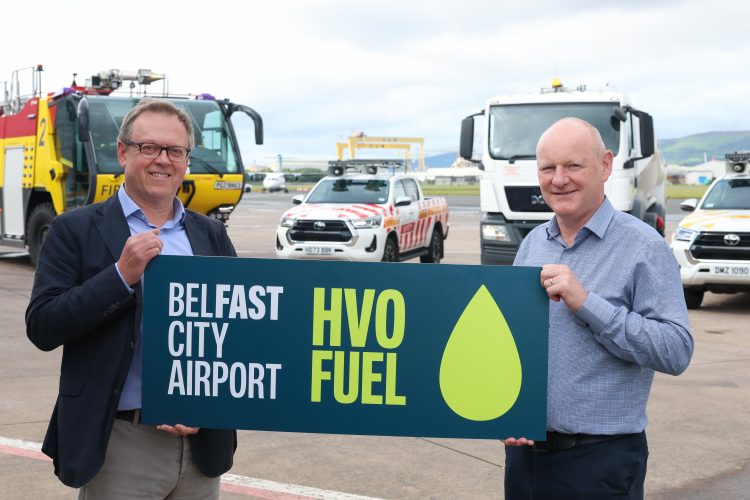Belfast City Airport will cut down its carbon vehicle emissions by 90% with HVO fuel
- Like
- Digg
- Del
- Tumblr
- VKontakte
- Buffer
- Love This
- Odnoklassniki
- Meneame
- Blogger
- Amazon
- Yahoo Mail
- Gmail
- AOL
- Newsvine
- HackerNews
- Evernote
- MySpace
- Mail.ru
- Viadeo
- Line
- Comments
- Yummly
- SMS
- Viber
- Telegram
- Subscribe
- Skype
- Facebook Messenger
- Kakao
- LiveJournal
- Yammer
- Edgar
- Fintel
- Mix
- Instapaper
- Copy Link
Posted: 11 September 2024 | Gabriel Higgins | No comments yet
Belfast City Airport has introduced Hydrotreated Vegetable Oil fuel for all its airside vehicles and equipment, that will reduce its carbon vehicle emissions by up to 90% compared with standard diesel.


Credit: Belfast City Airport
Belfast City Airport (BHD) has introduced Hydrotreated Vegetable Oil (HVO) fuel across 100% of its fleet of airside vehicles and equipment. This significant shift will reduce the airport’s annual carbon vehicle emissions by up to 90% compared with standard diesel. BHD is taking this step as part of its sustainability initiative, which also includes recent upgrades of the main apron lighting to energy-efficient LED systems. Ian Nuttall, Environment and Sustainability Manager at Belfast City Airport, said: “As a responsible business leader, Belfast City Airport is committed to sustainable operations and strives to do all it can to positively impact the environment, the local community, and the economy in which it operates.”
What is HVO fuel and LED lighting?
- HVO is classed as a paraffinic diesel fuel, which means it’s a synthetic diesel that has been made from a feedstock. For HVO, this is a form of renewable vegetable oil, animal oil or fat. This makes HVO an ideal choice for both performance and environmental impact.
- LED lighting is better for the environment due to its efficiency compared to traditional bulbs and can last up to 25 times longer with 90% less energy required for use. LEDs also emit less heat than traditional bulbs, with LEDs on releasing 5% or its energy as heat compared to 90% of an incandescent bulb.
Why is this important?
“By investing in HVO fuel and LED lighting for our main apron, we are demonstrating our dedication to environmental stewardship and making strides in our pursuit of net zero carbon emissions by 2050, with the ambition to achieve this sooner. We are committed to paving the way for an industry that not only connects people with places but also safeguards our environment,” continues Mr Nuttall.
Michael McDowell, Airfield Operations Manager at Belfast City Airport, added:
“The transition to HVO fuel for all airside vehicles and equipment means we are not only improving the efficiency of our ground operations, but also addressing the impact that we have on the environment. Our team is dedicated to integrating greener innovations into everyday practices, ensuring a seamless blend of operational excellence and sustainability.”
Related topics
Airport Carbon Accreditation (ACA), Airport development, Airside operations, Green energy, Sustainability, Sustainable development


















